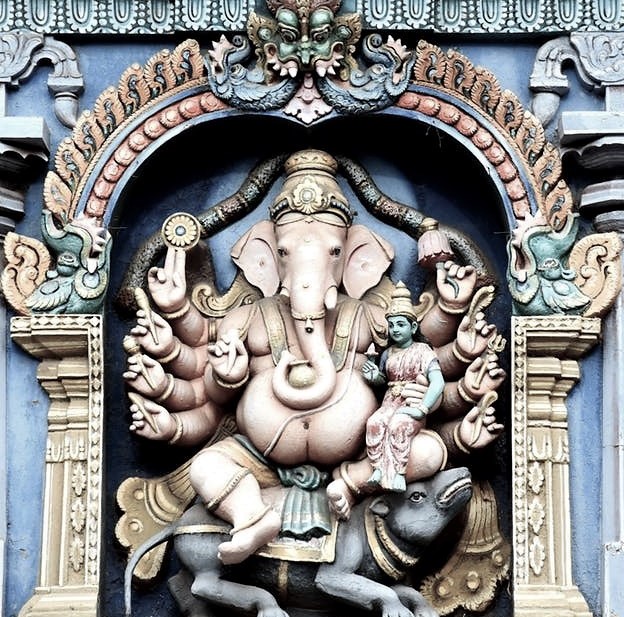- Special FeaturesFoundation Year1000 - 2000 years ldSthala TreeTheerthamMatsya TheerthamRathamArchitectureDravidian architectureOther Speciality(Divya Desam)
- Sthala Puran
This is a Divya Desam (S. No.48). The place is known as Thirupadagam.
Lord Krishna is the servant of His devotees in the noblest sense of the word. He undertook the job of a messenger for Pandavas, the five brothers, to speak to Duryodhana to get back their share of land.
To ensure peace and avoid perennial enmity, Lord Krishna took up a mission to Duryodhana to have at least five houses for Pandavas. Duryodhana was adamant and refused Lord Krishna’s suggestion.
Also, as advised by Sakuni, he dug a deep pit, placed wrestlers in it, covered the pit with blankets, and placed a chair for Krishna. When Lord Krishna sat on the seat, as expected, the chair went in and the wrestlers began to work.
But they were even collectively unable to bear the weight of Krishna and were killed. Lord Krishna grew taller with anger and revealed His furious Vishwarupa to the blind Dritharashtira, father of the wicked Duryodhana, and warned them of the consequences. Thus the Lord became Pandava Dhooda.
The epigraphy in the temple shows the Lord’s name as Dhoodha Hari. Lord Krishna is 25 feet tall in a sitting form.
This is the shrine where Lord Krishna graces His devotees with Viswapadhayoga powers pressing His feet on earth. Hence, those circumambulating the temple step by step or roll around touching the earth with all parts of the body would have all their 72,000 veins healthy to resist any infection.
After the Kurukshetra war, Pandavas’ grandson Parikshit ascended the throne and begged Acharya Vysampayana to tell him the story of his ancestors. Sage Vysampayana explained this Vishwarupa episode to the king.
He also sought the advice of the sage to have this darshan of the Lord. He came to this place, performed penance on Lord Krishna in Kanchipuram, and achieved his wish – the Vishwarupa darshan - in this sacred land.
The temple is believed to have been built by the Pallavas of the late 8th century AD, with later contributions from Medieval Cholas and Vijayanagar kings. The temple has three inscriptions on its walls, two dating from the period of Kulothunga Chola I (1070–1120 CE) and one to that of Rajadhiraja Chola (1018-54 CE).
The Perumal is seen seated in Arda Padmasana posture with his right leg bent to the basement. Since Lord Krishna appeared as a human being, there are only two hands to the deity, unlike other temples, where the presiding deities have four or more hands. The right palm depicts the Abhaya Mudra for protection and the left arm depicts Varada Mudra for giving boon.
The tower above Lord Krishna in Pandava Dhoodha Perumal is called Badra Vimana
- Architecture
Type - Dravidian architecture
Creator - Pallava
Completed - 8th Century AD
Inscriptions - Tamil
Lord Krishna in the sanctum sanctorum 5 feet tall
- Alankar of Deity
- Prayers and BenefitsSpecial Vratas and Prayers
Pray for relieved of any Harship
Offerings to DeityStotras and Mantras
- FestivalsSri Krishna JayantiAugust - SeptemberDeepavaliOctober - NovemberMukkotti Ekadasi in Panguni UthiramMarch -April
- Sodasha Upcharas
- Prasadhas
- Social ActivitiesAnnadhanMarriageEar BoringHead ShaveDanaasEducation FacilitiesSocial DrivesOther Activities
- Arjita Seva
- Tags

